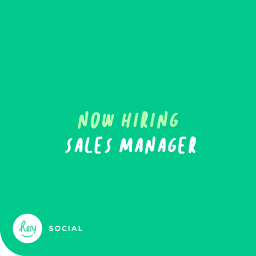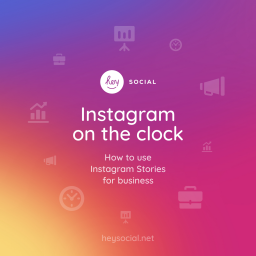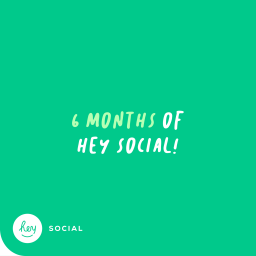While large businesses with huge numbers of daily interactions will go beyond what Messenger has to offer, the platform remains extremely useful to small businesses who use it the smart way. At Hey Social, we use smart tools that automate a lot of the workload, including grouping messages from all platforms in a single, centralized platform for customer engagement. However, if you feel it’s too early to invest in more complex systems, the best thing to do is to make sure you take full advantage of what existing tools can offer to your business.
Here are some things you can do for free to create a stellar customer experience for people who contact your business through Facebook.
* USE CANNED MESSAGES WITHOUT SOUNDING LIKE A BOT
Canned messaged can be your best friend. 90% of customer messages will be repetitive, so even if you don’t have a full-on customer support script, you should still have a ready-made answer for the most common of scenarios – including the very common situation of getting a question that is too cryptic to understand, and will need some clarification from the customer before you can proceed. This is the most common scenario we’ve seen that is usually not anticipated when designing answers or scripts.
Having such messages at the ready will greatly increase the speed of your answers, and allows your team, large or small, to focus on interactions that create value.
There a trick to doing this: have canned messages that don’t sound robotic. Maybe start with a clear reference to your customer’s issue, by rephrasing it, and copy/pasting the details after. This shows you understand the issue. When a customer asks for the opening hours of a store, don’t just reply with “daily 8 AM – 8 PM”. It may be quick, but it’s also dismissive. Instead, without getting too verbose, thank the customer of their interest, provide the information they need in a clear format (see next point!), and, if at all possible, anticipate another one of their needs.
For instance: “Hey Jane, thanks for getting in touch, we appreciate it! Our store in Perkins is open every weekday from 8 AM to 8 PM, and weekends from 9 AM to 5 PM. If you need any more info directly from them, our people there will be happy to help – call this number to speak directly to someone from that store: …”. This message can be sent anytime someone asks about the hours in Perkins – and they won’t feel like talking to your answering machine.

* USE LABELS TO MANAGE THE WORKFLOW
When it comes to using labels to mark conversations, our advice is to not overdo it, first of all. For instance, you could divide messages into questions about Shipping, Prices, Current offer, Refunds, etc., but you’ll soon end up with more categories than you can manage and a very large category labeled Others.
We recommend using just a few labels to manage the workflow, such as to say that certain messages need follow-up, that the conversation is a lead or there’s some valuable feedback there that we need to pass on to other team members.
It’s more helpful to see if any action is needed in a conversation, rather than what the conversation is about unless you have very specific categories that you need to carefully manage and/or measure. Also, you won’t need to change labels every few weeks, making them less relevant in time.

* GIVE PEOPLE A REASON TO INTERACT
This can be as easy as a competition or as complicated as a long-term engagement strategy through social media. At Hey Social, we think that every moment a customer spends in talks with us is a gift: after all, it’s time they’ll never get back, and they chose to use it talking to us.
We like to give people a clear reason to get in touch – for instance, by talking about a problem they have and we can “make go away” –, and when we get in touch, we listen carefully and try to come up with the most helpful answer, plan or strategy. Not everyone we speak to will become a customer; that’s not even the point.

* CARE ABOUT INTERACTION QUALITY, NOT FB INDICATORS
It’s nice to have that badge that says “Page responds in a few minutes”, but that’s not the goal. The real value you get is the quality of your interactions with your customers. Sometimes, the value does indeed come from a quick answer: someone might be in the street looking for your store or needing to know something right now. On many other occasions, value comes from responding the right way.
The canned messages we mentioned above can help you keep your score high enough so that you sometimes have more time to think about how to best answer, and will save you from errors you make when you’re in a hurry.
Using the example above, where (potential) customer Jane asked about the opening hours in Perkins, the customer rep could have just said today’s hours. But how do we know when Jane wants to go shopping? Don’t assume you know – ask the customer or, even better, provide information that’s clear and easy to understand. The second, longer answer, includes opening hours for all weekdays (you could send a link if they’re complex) and also directs to the customer to the store by giving them a direct contact option. Of course, this also means you have staff ready to answer the phone and be helpful, just like you have staff on social media!

* ALWAYS ASSIGN CONVERSATIONS!
Facebook allows you to “assign conversations” to people in your moderation team. If you have more than one person, you should *always* use this. The problem is not that two people on your team will waste their time answering; the real issue is you will seem disorganized, which leaves a lasting impression on your customer. The worst-case scenario? The customer gets two different answers, from people writing from different locations, in different tones of voice.
If you’re answering a message, assign that conversation to yourself; if you manage the team, assign the conversation to others. This native Facebook option is not a very functional system (it would be better to check for conversations assigned to you rather than rely on being notified they exist), but it can save your business from some embarrassing moments.

The simple foundation laid out above can help you be organized and encourage more people to connect to your business. Once everybody on your team is briefed on it, you’ll have more time to encourage engagement through messages without worrying you’ll be overloaded – and it’s one of the best ways of getting more traction for your page.
Encourage people to connect, put out a message about how you can help in their lives, and remember – nice conversations on Messenger, that makes the customer feel valued and heard, have many times been the beginning of beautiful, well, customer-brand relationships 😊
If you’re looking for help in creating those messages or you’d like a professional team to take the hassle of your hands altogether, it’s like we said – we value your time and your customer’s time, so a 30-min free consultation can be the beginning of hours and days saved for you and your internal comms team.








